by Jenuine Poetess
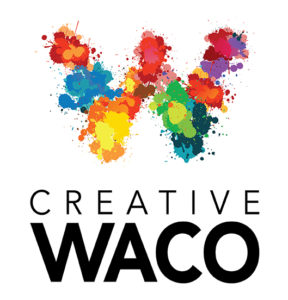 Recently, I had a chance to engage Creative Waco’s Director, Fiona Bond, to learn more about the project, its mission, and movements in Waco toward building and sustaining a thriving Cultural Arts District. I’m pleased to share the interview with you! More. Art. Now!
Recently, I had a chance to engage Creative Waco’s Director, Fiona Bond, to learn more about the project, its mission, and movements in Waco toward building and sustaining a thriving Cultural Arts District. I’m pleased to share the interview with you! More. Art. Now!
Jenuine Poetess: Please share a bit about yourself and how you became interested and involved in the arts in Waco.
Fiona Bond: I’m in this because I love the arts and this city and have huge respect and
admiration for those who work so hard to enrich its artistic and cultural life. In the UK, I ran festivals, cultural projects and arts organizations. I guess no one goes into this kind of work for the money or an easy life! However, when you see first-hand the difference that the arts make to places and people – no matter who they are or where they come from, it’s humbling and powerful.
I love Waco for so many reasons. I think it’s one of the most authentic places I’ve ever lived. It’s a wonderful location full of great people doing great things and I think we get to live here at a particularly exciting time in its history.
JP: What is Creative Waco?
FB: We are a Non-Profit 501(c)(3) Corporation established to be Waco’s “Arts Agency.” Cities that have arts agencies have a proven toolkit for growing the arts that combines access to funding (that Waco has not historically received) with growing the arts as part of the overall strategy for our community. Our mission is “to Grow and support the artistic and cultural life of Waco.”
JP: How does Creative Waco serve artists, arts & cultural organizations, and grass-roots efforts in Waco?
FB: I hope we will be able to do this in a number of ways. Firstly, I think we have a role making sure that our wider community, businesses and civic organizations know the power of the arts and cultural sector as an engine for growing Waco. We want to bring new resources to our artists and arts organizations in the form of practical support and also funding and infrastructure that have not historically been available to grow Waco as a Cultural Hub.
 Of course, we are not the only organization that is working to serve our artists and cultural organizations. Each part of the cultural “ecosystem” has an important role to play – individual artists are connecting with one another through CTAC. Four Columns Marketing has a monthly “potluck” for creative professionals and Waco Arts Alliance (which we help to co-ordinate) provides opportunities for people who run arts organizations, cultural events and activities. These all do the important work of building community, supporting professional development, and creating opportunities for connecting on all kinds of great ideas.
Of course, we are not the only organization that is working to serve our artists and cultural organizations. Each part of the cultural “ecosystem” has an important role to play – individual artists are connecting with one another through CTAC. Four Columns Marketing has a monthly “potluck” for creative professionals and Waco Arts Alliance (which we help to co-ordinate) provides opportunities for people who run arts organizations, cultural events and activities. These all do the important work of building community, supporting professional development, and creating opportunities for connecting on all kinds of great ideas.
JP: What are the main functions of CW?
FB: Right now, we are working on setting up the infrastructure that will allow Waco to be successful at creating some of the opportunities that have benefitted peer cities (like Fort Worth, Abilene, Amarillo and Round Rock…even Clifton!). For example, we are coordinating an application for Waco to be designated a Texas Commission on the Arts Cultural District. It also means working with our city and other agencies to start making bids for funding and other opportunities at state and national level. Here in Waco, we are beginning the work of coordinating resources, information and ideas so that we can grow Waco as a cultural hub…and tell the world.
JP: What are some projects CW is working on?
FB: Here are a few…
- Joint funding bids (e.g. with City for NEA funding towards artistic wayfinding that would join East and West Waco);
- Cultural District Application–the work of establishing a robust organization that can act as Waco’s Arts Agency and co-ordinate the Cultural District.
- We won the opportunity for Waco to be a feature city in Americans for the Arts’ national survey about economic impact of the Arts (funded jointly by our City, Chamber, BRC and CVB)
- Making Waco a hub for professional development opportunities for arts leadership (Texans for the Arts Day on Feb 24th at Waco Hippodrome).
- We are also working on making it easier for people in Waco to hear about the arts and artists through a variety of media outlets
JP: What is the place of arts & culture in community development? How important is arts & culture in comparison to work around poverty, education, employment, housing, and commerce?
FB: The arts do community development by their very nature because they are physical, experiential and creative. One of my past roles was to oversee a project that worked with generations of unemployed former mineworkers in Co Durham, England. The arts input gave hope and developed skills in a way that nothing else could. You see this over and over again. Issue-based drama and role-play do a better job of reaching vulnerable teens than telling them what to do, for example. The arts give us language and tools for asking questions, experimenting with complexity and outcomes, and opening up our humanity in ways that are completely unique. There is a lot of research that shows communities with a vibrant arts and cultural life thrive in all the ways we consider vital for “liveability”: Educational outcomes, revitalization, economic development, tourism, community cohesion and pride and even crime reduction. I have yet to see a community in the Western world that managed to “move the needle” on those issues without engaging its artistic and cultural “superpowers.”
JP: What do you hope to see come to life in Waco/Central Texas with regard to the arts?
FB: I would like Waco’s cultural gems to be better known and better supported. We have World-class artists, composers, performers, writers, and experts…right here in Waco and yet there is still a perception that because something is happening in Waco, it’s not quite as good as something presented in a larger or better known city.
I would like to see people who don’t think they care about the arts speak proudly about the vibrant cultural life of our city and relish investing in that and seeing the results, recognizing that it’s an essential part of the healthy growth of our community (just as even non-sports players invest in the important role that sport has in our community).
I would like Waco, with it’s perfect “crossing of the Brazos,” central Texas location to become a flourishing cultural hub for the 21st century – supporting thriving, sustainable, top notch venues and programming across many art forms. Our economic opportunity is not that we are conveniently close to Austin, Dallas, Fort Worth and other cultural centers…it is that they are close to us!
Get Involved!
-
 Connect on Facebook and Online to get the latest details, information, and event postings!
Connect on Facebook and Online to get the latest details, information, and event postings! - If you are an artist interested in being featured on the Creative Waco site, connect here!
- Support arts in Waco and purchase a blank, painted, or fully customized Creative Waco tote!
Be involved with local arts events: attend, bring friends, buy local artwork & publications, share events with others, help promote what is happening, donate to fund-raising initiatives, visit exhibits, make art, inspire others, create community!
 Jenuine Poetess is an artist, visionary, and community organizer. In 2010, she founded In the Words of Womyn (ITWOW), an international, grass-roots, written and spoken-word arts project with chapters throughout Los Angeles, CA; Waco, TX; and Lebanon. Jenuine is the founder of Waco Poets Society and co-founder of the Central Texas Artist Collective. She writes, organizes, and creates rooted in the fierce conviction that holding intentional space, access, and opportunity for all people to foster their creative health is a matter of justice and is a vital asset to the sustainable thriving of communities. She currently lives and poems in Central Texas where she enjoys finding new ways to disrupt the homeostasis of her city. You can contact her at: [email protected].
Jenuine Poetess is an artist, visionary, and community organizer. In 2010, she founded In the Words of Womyn (ITWOW), an international, grass-roots, written and spoken-word arts project with chapters throughout Los Angeles, CA; Waco, TX; and Lebanon. Jenuine is the founder of Waco Poets Society and co-founder of the Central Texas Artist Collective. She writes, organizes, and creates rooted in the fierce conviction that holding intentional space, access, and opportunity for all people to foster their creative health is a matter of justice and is a vital asset to the sustainable thriving of communities. She currently lives and poems in Central Texas where she enjoys finding new ways to disrupt the homeostasis of her city. You can contact her at: [email protected].
The Act Locally Waco blog publishes posts with a connection to these aspirations for Waco. If you are interested in writing for the Act Locally Waco Blog, please email [email protected] for more information.
by Analí Gatlin and Joel Looper
In our last Act Locally blog, we touched on the endless complexities of U.S. immigration law. We wanted to use this entry to focus on one vital piece of legislation that affects undocumented immigrants who are also crime victims, some of the most vulnerable people in our community. That piece of legislation is called the Violence Against Women Act (VAWA), and the part we’d like to address here is called the U Visa.
What is the U Visa?
Congress’s renewal of this legislation, the VAWA of 2000, created the U Visa, but U.S. Citizenship and Immigration Services (USCIS) didn’t start processing U Visa cases until 2007. This particular visa is for victims of certain crimes who have suffered “substantial physical or mental abuse” and who are helpful to law enforcement or other officials in investigating or prosecuting a crime.
To qualify for a U Visa, an applicant must prove several things: (1) they were the victim of a qualifying crime; (2) the crime occurred in the U.S.; (3) they have information about the crime; (4) they have been, are being, or are likely to be helpful in the investigation or prosecution; and (5) they suffered substantial physical or mental abuse because of the crime. (Please note this is a simplified breakdown of the U Visa. Visit the USCIS website for further details). The U Visa application must also be certified, typically by law enforcement or a prosecutor, a step which, as we’ll see, is often needlessly difficult.
On top of all of this, the applicant must satisfy USCIS that they deserve the agency’s “yes.” As part of the application process, the applicant is fingerprinted and their immigration and criminal background is highly scrutinized. If the applicant has a criminal history or serious immigration offenses, they will have to counterbalance these negatives by showing they have “good moral character” and have “rehabilitated.” If they cannot prove to USCIS that they merit approval, their case will be denied.
The U Visa application process is arduous and highly uncertain. If the applicant succeeds in their case, they will receive U Visa status for four years. A U Visa allows an immigrant to obtain a work permit and a social security card—after all, it’s difficult to get by in the U.S. without the ability to work legally—but it does not allow any travel outside the United States. Even then, the applicant still has interviews, fingerprinting, English and civics tests, medical exams, endless paperwork, and a minimum of eight years left on the path to citizenship.
Why does the U Visa matter?
The U Visa serves a couple of important purposes. First, it helps law enforcement. Undocumented immigrants are often targets for crimes in large part because criminals don’t think someone without papers will contact the police. And, historically speaking, the criminal is right. Many undocumented immigrants have not contacted the police to report crimes because they feared that their undocumented status would be discovered and they would be deported.
Take, for example, an undocumented woman who is severely beaten and raped by her boyfriend. She might be afraid to contact the police because those very same officers could set in motion her deportation. But if she doesn’t tell the police, the perpetrator will likely never see justice. The existence of the U Visa gives undocumented victims the confidence to come forward with information, giving police the tools they need to fight crime. It allows the victim to remain in the U.S. and assist law enforcement as they investigate and prosecute the crime. And, of course, getting criminals off the streets makes us all safer. We don’t want an entire population in our community not reporting crimes; that allows criminals to thrive in our midst.
The U Visa is an important crime fighting tool; that in itself is enough to justify its existence and continual renewal by congress. But there’s another important reason why the U Visa exists, and it’s a humanitarian one. It only seems fair that a person who is brave enough to come out of the shadows and help law enforcement take down a criminal should receive protection in return. That’s especially true since U Visa recipients are often among the most vulnerable people in this country. Simply put, certifying and granting U Visas is a matter of justice. It’s just the right thing to do.
What are some of the challenges facing U Visa applicants?
An application for a U Visa cannot move forward without getting a certification. This certification can come from a law enforcement official, prosecutor, judge, or another authority responsible for investigation or prosecution of criminal activity.
Certification does not mean that the individual will be granted a U Visa. It it simply certifying that the individual in question was a victim of a qualifying crime and that the individual was helpful in the investigation or prosecution—nothing more. Again this certification is just one form in a stack of forms which makes up the application for a U Visa. It doesn’t mean USCIS will ever stamp “approved” on the application.
Nevertheless, there are local officials in certain jurisdictions who have made it policy never to certify a U Visa. By refusing to sign, they stop this immigration benefit dead in its tracks. They stop it before it’s even begun. That means an undocumented person who was the victim of a crime that occurred in one of these jurisdictions will likely never get a U Visa. And, as we’ve seen, communities are often harmed by this refusal.
Another major set-back for U Visa applicants is the government’s annual cap. Congress allows only 10,000 U Visas to be issued every year. Unfortunately, thousands more qualified people submit applications annually. That has left USCIS with a huge backlog of cases; in fact, they just reported there are over 75,000 people currently on the U Visa waiting list. This means that once a qualified person applies for a U Visa, it will be years before they actually receive the visa, leaving them in immigration limbo all the while.
What can community members do to help?
First, U Visas are certified by local officials such as the District Attorney and the police. We can show our support of local leaders who do certify U Visas, and we can encourage others to start using this important crime-fighting tool to make our community safer and fairer.
Second, we can contact our local congress person and urge them to increase the number of U Visas granted per year. There is a tremendous need for U Visas and thousands of people qualify every year who are unnecessarily left on a waiting list.
Let’s not leave the most vulnerable among us waiting, Waco. Let’s act.
 Analí Gatlin is a Waco native who is currently practicing immigration law at a nonprofit organization in Austin, TX. She loves Waco and naturally spends her weekends at home here. Joel Looper, originally from Michigan, has made his home in Waco and teaches religion and Language Arts at Live Oak Classical School. Joel and Analí are also busy planning their upcoming wedding.
Analí Gatlin is a Waco native who is currently practicing immigration law at a nonprofit organization in Austin, TX. She loves Waco and naturally spends her weekends at home here. Joel Looper, originally from Michigan, has made his home in Waco and teaches religion and Language Arts at Live Oak Classical School. Joel and Analí are also busy planning their upcoming wedding.
The Act Locally Waco blog publishes posts with a connection to these aspirations for Waco. If you are interested in writing for the Act Locally Waco Blog, please email [email protected] for more information.
by Matthew Polk
The Prosper Waco initiative is about setting bold goals for positive change in our community and finding ways to reach them. The Prosper Waco steering committees of community members have set goals around the following issues that our community wants to reach by 2020:
- More kids being ready to learn when they start Kindergarten
- More students (and adults) finishing a college degree or certificate that will get them a good job
- More people knowing where they need to go to get the best healthcare…and being able to afford it
- More people living a healthy lifestyle and losing weight
- More women receiving the healthcare they need to make sure they and their babies are healthy
- More community members reporting good mental health
- More youth (16-24 year olds) getting a job
- More people getting the job training they need to make a better living
- More people being able to save for their future
All of these things sound like positive change, but it can be hard to wrap your head around how we know whether we are moving in the right direction. To make it as easy as possible to visualize where we stand on each of these goals and whether we are going in the right direction, we have created a ‘data dashboard’ on the Prosper Waco website (www.prosperwaco.org).
When you visit the site, click ‘The Goals’ on the main menu. You will see three icons representing the Education, Health, and Financial Security goals. Click on one of the icons for a brief explanation of each goal and how we are measuring it. You can click the tab for each goal to see a chart depicting where we stand based on the data that is currently available.
Over time, we will continue to track the indicators associated with each goal and add that data to the charts so that we can all see whether we are going in the right direction. Is the number of Kindergarten-ready students going up? Is the number of overweight and obese adults in our community going down? We’ll all be able to see it as we continue to track our progress.
But be patient! This big-picture data about our community won’t change overnight…these are big needles that take a lot of effort to move in the right direction. In fact, we can’t snap our fingers and collect this data every day, or even every month. Much of this data is collected on an annual basis through a variety of local, state, and national instruments. That’s why our community has given itself five years to make the difference we want to make on these big, important issues.
If you are the kind of person who ‘reads the fine print’ and always wants to know the details, the data dashboard may be only the tip of the iceberg of what you want to know about our community. For you, we have more! Keep an eye on ‘The Goals’ page for the community scorecard that we will post by the end of November.
This scorecard is a more in-depth report on a wide range of indicators about our community. It puts the Prosper Waco initiative goals in context by providing additional data that “tells the whole story.” The initiative goals are important markers of positive change for our community, but we all know that one piece of information by itself doesn’t always paint the whole picture. The community scorecard collects many different data points and explains them in a straightforward way.
We know that Wacoans (and especially Act Locally Waco readers!) care about Waco. Even if data and numbers aren’t your thing, we want to make it as easy as possible for you to keep up with how our community is doing on the most important issues: education, health, and financial security for all members of our community.
If you have any questions about any of the information you find on our website, or if you have ideas about what it takes to improve education, health, and financial security in your community, don’t hesitate to reach out. In fact, you can use our new community engagement email address: [email protected]!
Send an email to us at this address and you’ll get a reply either from a Prosper Waco staffer or a member of the Prosper Waco community engagement council—a community member who lives in your neck of the woods. Either way, every comment and idea is important and helps guide where this community initiative goes!
 This Act Locally Waco Blog post was written by Matthew Polk. Matthew is Executive Director of Prosper Waco. Prior to that, he served as Superintendent of Rapoport Academy Public School. He and his wife attended Baylor, and after spending a few years in the northeast, they returned to Waco to raise their family. They have four children, ages 8 to 3 months. You can contact him at [email protected].
This Act Locally Waco Blog post was written by Matthew Polk. Matthew is Executive Director of Prosper Waco. Prior to that, he served as Superintendent of Rapoport Academy Public School. He and his wife attended Baylor, and after spending a few years in the northeast, they returned to Waco to raise their family. They have four children, ages 8 to 3 months. You can contact him at [email protected].
The Act Locally Waco blog publishes posts with a connection to these aspirations for Waco. If you are interested in writing for the Act Locally Waco Blog, please email [email protected] for more information.
by Meilana Charles
November is National Prematurity Awareness Month and Tuesday, November 17th is World Prematurity Day. This month, individuals, groups and organizations around the world will provide information on the impact of early births on babies and their families.
What is Premature Birth? According to the Center for Disease Control and Prevention (2013) a baby born at 40 weeks is defined as full term, however, if born 3 weeks prior to its due date the baby is considered premature.
The March of Dimes states that 15 million babies are born prematurely worldwide each year (March of Dimes, 2013). In the U.S., one in every nine babies or about 450,000 babies a year are born premature (March of Dimes, 2013). In Texas 12.3% of babies were born premature. Of those percentages, African-American women were more likely to deliver a premature baby regardless of her age, income and education level (Unnatural Causes, 2008). Health Implications associated with premature births include:
- Feeding and digestive problems
- Breathing problems such as Respiratory Distress Syndrome
- Severe infections
- Jaundice
- Brain injury
- Retinopathy
- Anemia
- Hearing Loss
- Cerebral palsy
- Intellectual disabilities later in life
But there is good news! In 2013, thanks to the collaborative efforts of several organizations, premature deliveries have declined to just 11.4 % nationwide. However, there’s still a long way to go. With all the workshops and resources available, it’s still up to the individual to work toward decreasing the likelihood of a premature birth. Here are some ways individuals can decrease the possibility of premature labor:
Preconception Health – Prior to pregnancy women and men alike should visit with a primary care physician in preparation for the pregnancy. They should also continue eating healthy, maintain a physical activity routine, research family health history, update necessary immunizations, reduce stress and avoid products containing alcohol, tobacco and recreational drugs. Additionally, women should take a multivitamins that includes at least 400 mg. of Folic Acid.
 Early Prenatal Care – As soon as pregnancy is suspected, a doctor’s appointment should be scheduled. This will confirm pregnancy and a due date. A physical exam, ultrasound and several tests may be ordered, and a family health history will be taken. The earlier prenatal appointments begin, the more the probability of prenatal and fetal complications that can lead to premature births can be reduced.
Early Prenatal Care – As soon as pregnancy is suspected, a doctor’s appointment should be scheduled. This will confirm pregnancy and a due date. A physical exam, ultrasound and several tests may be ordered, and a family health history will be taken. The earlier prenatal appointments begin, the more the probability of prenatal and fetal complications that can lead to premature births can be reduced.
Watch your Weight – Moms should eat a balanced diet with the appropriate amounts of folic acid, iron, calcium, vitamin D and mineral while avoiding seafood high in mercury. Primary care physicians will work with pregnant moms to develop an appropriate eating and physical activity plan. This may decrease unhealthy weight gain or preventable diseases, both of which can negatively contribute to premature deliveries.
No Stress – Prenatal stress during pregnancy has been associated with miscarriages, premature births and low weight. Additionally, behavioral and emotional difficulties later in life can be attributed to stressful pregnancies. That is why it’s important to find suitable coping strategies to avoid or limit stressful situations.
Food Safety – Although rarely discussed, bacteria such as listeria, toxoplasmosis, salmonella, and campylobacter can severely impact a pregnancy. Exposure may lead to premature birth, birth defects, later learning disabilities and even intrauterine or infant death. To avoid the likelihood of ingesting harmful bacteria, follow the 4 principle of food safety: clean, separate, cook and chill. Click on the link for more information on the food safety principles: http://homefoodsafety.org/food-poisoning/four-easy-steps
The prevalence of premature births is a worldwide epidemic impacting families and communities. However, with access to preventative care, resources and information, families can become aware its lifelong implications and take steps to have happy, healthy full-term babies.
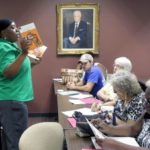 This Act Locally Waco blog post was written by Meilana Charles. Meilana is a Family and Consumer Sciences Extension Agent at Cooperative Extension Program at Prairie View A&M University. Meilana’s priority areas for providing educational resources to McLennan County are general nutrition, money management and parenting. She has a M.S. in Child Development from Texas Woman’s University and is a certified Human Development and Family Studies professional through American Association of Family and Consumer Sciences.
This Act Locally Waco blog post was written by Meilana Charles. Meilana is a Family and Consumer Sciences Extension Agent at Cooperative Extension Program at Prairie View A&M University. Meilana’s priority areas for providing educational resources to McLennan County are general nutrition, money management and parenting. She has a M.S. in Child Development from Texas Woman’s University and is a certified Human Development and Family Studies professional through American Association of Family and Consumer Sciences.
The Act Locally Waco blog publishes posts with a connection to these aspirations for Waco. If you are interested in writing for the Act Locally Waco Blog, please email [email protected] for more information.
Sources:
Academy of Nutrition and Dietetics. Four easy steps. http://homefoodsafety.org/food-poisoning/four-easy-steps
Center for Disease Control and Prevention. (2014). Preconception health and health care-Information for men. http://www.cdc.gov/preconception/men.html
Center for Disease Control. (2014). Preconception health and health care-Planning for pregnancy. http://www.cdc.gov/preconception/planning.html
Center of Disease Control and Prevention. (2013). National Prematurity Awareness Month-What is premature births? http://www.cdc.gov/Features/PrematureBirth/
California Newsreel. (2008). Unnatural causes: Is inequality making us sick? http://www.unnaturalcauses.org/about_the_series.php
March of Dimes. (2012). Born too soon: The global action report on preterm birth. http://www.marchofdimes.org/materials/born-too-soon-the-global-action-report-on-preterm-birth.pdf
March of Dimes. (2014). Texas premature report card. https://www.marchofdimes.org/peristats/pdflib/998/premature-birth-report-card-Texas.pdf
March of Dimes. (2014). U.S. premature birth report card. http://www.marchofdimes.org/materials/premature-birth-report-card-united-states.pdf
by Adam Moore
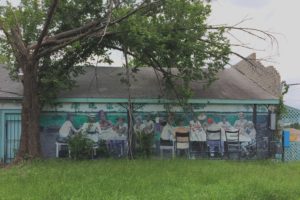 How well do you know Waco? I don’t mean Waco history, politics, or where to find the best burrito in town (I tend to favor Sergio’s food truck). Rather, I mean have you actually seen the different areas of our city? Have you been to the various neighborhoods? Are you familiar with the historical parts of Waco? Have you spent much time on ‘the other side of the train tracks’ or ‘the other side of the river’? How big is your idea of Waco? Is it centered on your particular neighborhood and the most common places you frequent, or is it bigger than that? I think these questions matter. And I think most of us don’t know Waco as well as we think we do. At least, I know that was true of me. Even though I’ve lived in Waco for much of the past 17 years, I’ve only recently gained a broader perspective of the geography of our town. And oddly enough, it took getting a little lost for me to begin to open my eyes to the larger city around me.
How well do you know Waco? I don’t mean Waco history, politics, or where to find the best burrito in town (I tend to favor Sergio’s food truck). Rather, I mean have you actually seen the different areas of our city? Have you been to the various neighborhoods? Are you familiar with the historical parts of Waco? Have you spent much time on ‘the other side of the train tracks’ or ‘the other side of the river’? How big is your idea of Waco? Is it centered on your particular neighborhood and the most common places you frequent, or is it bigger than that? I think these questions matter. And I think most of us don’t know Waco as well as we think we do. At least, I know that was true of me. Even though I’ve lived in Waco for much of the past 17 years, I’ve only recently gained a broader perspective of the geography of our town. And oddly enough, it took getting a little lost for me to begin to open my eyes to the larger city around me.
 About six months ago I fixed up my dad’s old bike and started riding it around Waco. I figured it would be a good way to get some exercise, but I was also interested in getting out and exploring some areas of town I had never been to before. At first I would just leave my house and start riding, not really sure where I was going or how I would get back. I live in a fairly central part of town, so no matter which direction I went, I was likely to find somewhere new to get a little lost. Originally, the goal was just to explore, but as I started to discover more of our city, I also began to take photos of what I was seeing–houses, businesses, murals, churches, parks–anything that caught my attention. I created an Instagram account (@Lost_in_Waco) and starting sharing what I was seeing. I was fascinated and intrigued by the history, the culture, and the hidden beauty to be found everywhere I went, even in the so-called ‘less desirable’ areas of town. Riding through Waco I made a concerted effort to pay attention to what was around me–while also keeping my eyes on the road–and to try and notice what might normally go unappreciated. Of course, not everything I’ve seen has been positive, but I do try and see beauty where it might typically be overlooked. And I’ve realized it isn’t that hard to find.
About six months ago I fixed up my dad’s old bike and started riding it around Waco. I figured it would be a good way to get some exercise, but I was also interested in getting out and exploring some areas of town I had never been to before. At first I would just leave my house and start riding, not really sure where I was going or how I would get back. I live in a fairly central part of town, so no matter which direction I went, I was likely to find somewhere new to get a little lost. Originally, the goal was just to explore, but as I started to discover more of our city, I also began to take photos of what I was seeing–houses, businesses, murals, churches, parks–anything that caught my attention. I created an Instagram account (@Lost_in_Waco) and starting sharing what I was seeing. I was fascinated and intrigued by the history, the culture, and the hidden beauty to be found everywhere I went, even in the so-called ‘less desirable’ areas of town. Riding through Waco I made a concerted effort to pay attention to what was around me–while also keeping my eyes on the road–and to try and notice what might normally go unappreciated. Of course, not everything I’ve seen has been positive, but I do try and see beauty where it might typically be overlooked. And I’ve realized it isn’t that hard to find.
So why does this matter?
 I think there are a lot of good things happening in Waco right now–there is much to be optimistic about. However, if we fail to have a broad geographic vision of our city, then we cannot have a comprehensive vision of a prospering Waco. Any dream of a more vital and flourishing Waco must include much more than the few areas of town I most often frequent. What I have found is that by getting a little lost in Waco–going out into the city and exploring the unfamiliar–I have come to better understand both the challenges facing our community and the significant assets of our city. And I do not mean assets that can simply be appropriated for my own benefit (or the benefit of people like me); I mean the existing businesses, neighborhoods, and people that already make Waco a great community. Perhaps you would benefit from going out and getting a little lost in Waco–what do you think?
I think there are a lot of good things happening in Waco right now–there is much to be optimistic about. However, if we fail to have a broad geographic vision of our city, then we cannot have a comprehensive vision of a prospering Waco. Any dream of a more vital and flourishing Waco must include much more than the few areas of town I most often frequent. What I have found is that by getting a little lost in Waco–going out into the city and exploring the unfamiliar–I have come to better understand both the challenges facing our community and the significant assets of our city. And I do not mean assets that can simply be appropriated for my own benefit (or the benefit of people like me); I mean the existing businesses, neighborhoods, and people that already make Waco a great community. Perhaps you would benefit from going out and getting a little lost in Waco–what do you think?
 If you do decide to go explore, I certainly recommend riding a bike, but you might want to drive to a different area of town and go for a walk, or simply find some local businesses to support in areas you seldom frequent. Not only will you broaden your knowledge of Waco geography, you’ll also get to interact with new people. Of course, you can also get on Instagram, start sharing your own photos, and join the growing community posting photos under #wacotown, #waco, #wacoisawonderland, #wacomurals, #housesofwaco, #churchesofwaco, and even #lostinwaco. And if we ever cross paths on Instagram, or if you see me riding my bike around town, be sure to say hello. I’ll be happy to point you in a great direction to get lost.
If you do decide to go explore, I certainly recommend riding a bike, but you might want to drive to a different area of town and go for a walk, or simply find some local businesses to support in areas you seldom frequent. Not only will you broaden your knowledge of Waco geography, you’ll also get to interact with new people. Of course, you can also get on Instagram, start sharing your own photos, and join the growing community posting photos under #wacotown, #waco, #wacoisawonderland, #wacomurals, #housesofwaco, #churchesofwaco, and even #lostinwaco. And if we ever cross paths on Instagram, or if you see me riding my bike around town, be sure to say hello. I’ll be happy to point you in a great direction to get lost.
 Adam Moore rides his bike and takes pictures around Waco. You can find his photos on Instagram (@Lost_in_Waco) and on Facebook (Lost in Waco). He lives in Waco with his wife, Brooke, and his two daughters, who both attend Lake Air Montessori in Waco ISD. Adam works as a program coordinator for the Baylor Interdisciplinary Core in the Honors College at Baylor. You can contact Adam at [email protected].
Adam Moore rides his bike and takes pictures around Waco. You can find his photos on Instagram (@Lost_in_Waco) and on Facebook (Lost in Waco). He lives in Waco with his wife, Brooke, and his two daughters, who both attend Lake Air Montessori in Waco ISD. Adam works as a program coordinator for the Baylor Interdisciplinary Core in the Honors College at Baylor. You can contact Adam at [email protected].
The Act Locally Waco blog publishes posts with a connection to these aspirations for Waco. If you are interested in writing for the Act Locally Waco Blog, please email [email protected] for more information.
by Dr. Cristina Cleveland (Special thanks to Rocio Ramirez for her great input! – CC)
In Mexico and in other Latin American countries on November 2nd, we celebrate the “Day of the Dead.” It is, in fact, a two-day celebration since the day before, on November 1, we celebrate the “Day of Innocent Saints” referring to children and infants who have passed away.
The origins of Dia de los Muertos come from pre-Hispanic civilizations, from 3,000 years ago, long before the Spaniards arrived to Mexico. Trust me… they tried hard to eradicate it, but instead, it emerged as a new way to honor our ancestors. Now even for the Catholic calendar, November 1st is All Saints’ Day, and November 2nd All Soul’s Day.
The tradition is to prepare an altar (at home, schools, parks and government offices) with the four elements of nature — water (beverages), wind (music), fire (candles), and earth (flowers) — to honor and show respect and love to the important people in our lives that are already dead. We also cook the food that the deceased person used to love and make a very special bread called “Pan de Muerto.” You may also see plain water in vases with soft towels since we invite our ghostly “guests” to clean themselves and get ready before the party begins. Sometimes there are toys for the children.
The main flower that is used to decorate the altars in zempazuchitl, (marigold) a deep orange flower only available during October and November. People sometimes create floral arches or different and very sophisticated designs of flower bouquets. They also include some pictures and items that belonged to the deceased person as part of the decorations.
It is believed that all souls are eternal and they can travel from this world to the next one back and forth, so a few days before November 1 families engage in the preparation of food and presents for the family members and friends from the other world who will visit them during those days.
This celebration is far from being a sad occasion! It is, in fact, one of the most beautiful and fun holidays we have. There are parades where people dress nice and in fancy costumes and they paint their faces as skulls. There is music and dancing from downtown all the way until you arrive to the graveyard, which has already been cleaned, decorated and prepared for the celebration. Once there, you can perfectly see a lot of candles everywhere, mariachi music and trios, and people are laughing and sharing stories about the people they are honoring and sharing the food that they prepared.
Of course, sometimes you can see a lonely person with few ornaments crying over a tomb, is not easy to remember someone that you cannot embrace anymore without some tears…
El Dia de los Muertos it is a celebration of life. It is also a reminder that we all will be there someday, but we’re not afraid, because we will come back every year to eat our favorite food and be around our beloved ones.
People also write “calaveras” (literate skulls), short rhyming poems making fun or telling anecdotes about people that are still alive (for some reason politicians are very prone to get one of these). Kids go out and ask for “calaverita” kind of trick or treat, but they’re asking for a sugar skull with their names printed on them.
 One of the most iconic symbols for this date is also “La Catrina”, which is a very fancy dress up lady created by Mexican Artist Jose Guadalupe Posada in the late 1800’s to mock the lifestyle of rich Mexicans trying to tell them, that even money can’t keep us from death.
One of the most iconic symbols for this date is also “La Catrina”, which is a very fancy dress up lady created by Mexican Artist Jose Guadalupe Posada in the late 1800’s to mock the lifestyle of rich Mexicans trying to tell them, that even money can’t keep us from death.
On November 7th, 2003, the 18 member countries of UNESCO (the United Nations Education, Scientific and Cultural Organization) voted unanimously to make Mexico’s November Day of The Dead traditions a part of the List of Intangible Cultural Heritage of Humanity. This means that UNESCO has identified these traditions as an essential component of cultural diversity and creative expression. They are a worldwide cultural treasure. The practices should be safeguarded, and we should enjoy the responsibility of making sure more people are aware of them.
Celebrate Dia De Los Muertos at the Art Forum of Waco:
October 31 – Dia de los Muertos Reception at the Art Forum – Join the Art Forum of Waco, as they celebrate Dia de los Muertos through art and traditional stories, events and activities. Over 20 artists, including students from McGregor ISD, will be participating in this event. Cost: Free, with donation accepted. Time: 6 PM-9 PM. Location: Art Forum of Waco [1826 Morrow Ave.]. For more information contact Arthur Huron at 254.733.1525.
November 1 thru 7 – Dia de los Muertos celebration at the Art Forum – Join Art Forum of Waco, as they celebrate Dia de los Muertos through art and traditional stories, events and activities. Over 20 artists, including students from McGregor ISD, will be participating in this event. Cost: Free, with donation accepted. Time: 11 AM-6 PM daily. Location: Art Forum of Waco [1826 Morrow Ave.]. For more information contact Arthur Huron at 254.733.1525.
 This Act Locally Waco blog post was written by Dr. Cristina Cleveland. Cristina was born and raised in Mexico City. She’s a Pediatric Neurologist and when she moved to Waco back in 2008, she was planning to be a stay-home-mother of their now 7-years-old-twins. Things changed (as usual) and now, after getting a Master’s Degree in Education, she works for the Foreign Language Department in Waco ISD. In her spare time you can see her driving her twins to the library, karate, soccer, swimming and art classes. If she could just get a “time out,” she would probably be walking, swimming, reading or watching a foreign movie.
This Act Locally Waco blog post was written by Dr. Cristina Cleveland. Cristina was born and raised in Mexico City. She’s a Pediatric Neurologist and when she moved to Waco back in 2008, she was planning to be a stay-home-mother of their now 7-years-old-twins. Things changed (as usual) and now, after getting a Master’s Degree in Education, she works for the Foreign Language Department in Waco ISD. In her spare time you can see her driving her twins to the library, karate, soccer, swimming and art classes. If she could just get a “time out,” she would probably be walking, swimming, reading or watching a foreign movie.
The Act Locally Waco blog publishes posts with a connection to these aspirations for Waco. If you are interested in writing for the Act Locally Waco Blog, please email [email protected] for more information.
By Tiffany Fry
As I go out and about in the community, I always have fun when I talk about our Waco Goodwill Learning Center. A lot of folks I meet have shopped and/or donated goods to our retail stores. This is always great to hear! And no worries to any folks that have not. One of my roles as the Learning Center coordinator is to share the work of our mission services. Mission services you say? Why yes, we at Heart of Texas Goodwill actively pursue the full participation of folks with barriers in society through our employment and training programs. We fulfill this mission through our four Learning Centers located in Waco, Belton, Temple, and Killeen.
At our Waco center, we provide employment readiness and computer training services. While our focus is on folks that have barriers such as unemployment, criminal history, etc. or disabilities, we will serve anyone that walks through our doors. Our employment readiness includes job search assistance, career exploration, resume preparation, interview skill training, and job retention training. These services are offered in both class and individual sessions. Our Job Opportunity Boot Camp is a weeklong workshop that covers all of our employment readiness topics in a class setting. In addition, one of the services I’m most proud of at our Learning Center is that we can meet with you on an individual basis and provide our employment readiness services to you as many times as you need. Want to learn how to write a resume and then practice interviewing two or three times? Just schedule an appointment with our staff! We have a heart for teaching and equipping people with the skills they need to successfully find and maintain employment.
Additionally, when you visit us, you can learn about two of our initiatives, Operation Good Jobs and Careers in Retail. Operation Good Jobs is a program that helps veterans and their immediate family members find and maintain employment in a field of their choice. Through this initiative, financial assistance can be provided for education, credentialing, and/or training. Our second initiative, Careers in Retail, is a program to equip people with the skills they need to move into mid-level and/or supervisory positions in the retail, hospitality, and restaurant industries. Training and certifications are provided at no cost for participants enrolled in the program.
Speaking of no cost, we also provide free weekly computer classes. We offer beginner classes in Computer Basics, Internet & Email, Microsoft Word, and Microsoft Excel. Additionally, we offer $10 Continuing Education classes through McLennan Community College. Currently, our MCC classes are Basic Workplace Computer Skills, Word 2010, and Excel 2010. These classes provide more in-depth training and are useful for folks that want to learn about certain Microsoft Office Suite programs for the workplace.
And our services do not end there! We know it’s important to equip folks with the skills they need on the job readiness end of the spectrum, but we also want to connect our participants to businesses in our community. We work to build relationships with businesses so that we can refer our qualified participants to hiring managers. Additionally, we host monthly hiring events for businesses around the community. Our hiring events are a great opportunity to help our community members get placed into local jobs.
All that to say we certainly have quite a bit that goes on in our center. At the same time, I am reminded that our learning center is a part of the whole picture of folks working hard to make our community a better place. A big part of my job is to build relationships with community organizations and I’m constantly meeting people that have great ideas of how to better develop our workforce. I think it’s important that individuals and organizations engaged in workforce development partner and strategize together. We can better address the challenges many of our community members face with employment by looking at our community holistically and connecting workforce development to education, health, and financial stability. I have to say I am encouraged by the work going on in our community with the Prosper Waco initiative and I hope that we can all continue the work that has been done to make Waco a better place. I know on our end, we will certainly continue to work hard to fulfill our mission to build an inclusive workforce!
 Tiffany Fry made one of the best decisions of her life by switching from UT Austin to Baylor at the last minute. She graduated in 2011 and decided to make Waco her home. She is a thankful graduate of the Diana Garland School of Social Work MSW program. In her spare time she likes to hang out with her cat, husband, and friends (in no particular order), be outside, and read history books. Feel free to contact Tiffany at [email protected] or 254-753-7337 x 140.
Tiffany Fry made one of the best decisions of her life by switching from UT Austin to Baylor at the last minute. She graduated in 2011 and decided to make Waco her home. She is a thankful graduate of the Diana Garland School of Social Work MSW program. In her spare time she likes to hang out with her cat, husband, and friends (in no particular order), be outside, and read history books. Feel free to contact Tiffany at [email protected] or 254-753-7337 x 140.
The Act Locally Waco blog publishes posts with a connection to these aspirations for Waco. If you are interested in writing for the Act Locally Waco Blog, please email [email protected] for more information.
By Ashley Thornton
First thing in the morning on October 19, the first day to vote early, I hustled down to the McLennan County records building and voted “Yes!” for the WISD Tax Ratification. I know the final votes won’t be tallied until November 3, but I couldn’t wait.
I have high hopes for Waco. Everywhere I look I see evidence that my hopes are justified. Downtown is starting to blossom; we just got a National Park designation; Fixer Upper has put us on the map with the HGTV crowd; the Baylor Research and Innovation Collaboration (BRIC) and SpaceX are drawing the technology of the future into the Heart of Texas…the list of positives is growing every day.
Perhaps because of all this good buzz , fairly regularly I get a phone call or an email from someone who is moving to Waco and wants the “inside scoop” on living here. I have not had one of these conversations yet that did not end up being a conversation about school districts. People who have school-age kids obviously want to know for the good of their own children, and people who don’t have kids want to know because it affects the value of whatever home they might buy here. These conversations reinforce for me what we all already know: Any community that expects to thrive must have a strong school district.
Bluntly, our school district needs to be stronger, and, bluntly, it will cost money to make that happen. We can keep dinking around with the resources we have, trying this or that new program, but in the end that’s like pushing the food around on your plate to make it look like there’s more than there is — not a satisfying strategy.
We have a high percentage of children in our schools who come from very low income situations. Every speck of research that I have ever seen points to the plain fact that it costs more to educate children who come from families with very little money. Imagine two cups. The first cup is half full and the second is nearly empty. If you pour a half a cup of juice in the first cup, you will fill it up. If you pour a half a cup of juice in the second cup, the cup will still not be full. I feel like that is what is happening with our school district. Kids from higher income families are more likely to come with their education cups already half full. Kids from lower income families are more likely to come with their education cups much closer to empty. It takes more juice to fill them up, and getting more juice – additional programming and additional instructional staff — requires some investment.
 Put another way, I have complete confidence that if we took our exact same school district with the same teachers, same buildings, same administrators, same budget, same everything, and plopped it down into the middle of a town with a more affluent student population, we would be knocking the top out of the state accountability measures. Fair or unfair, though, that is not the case. Fair or unfair, when you look at the list of schools in WISD, you see a sprinkling of “improvement required” ratings mixed in among the “met standard” ratings. And, fair or unfair, families and businesses make decisions about whether or not to move into our community based on those ratings. What we are doing now is getting us to where we are now. If we want to get better results, we will need to do what we are doing now… plus more.
Put another way, I have complete confidence that if we took our exact same school district with the same teachers, same buildings, same administrators, same budget, same everything, and plopped it down into the middle of a town with a more affluent student population, we would be knocking the top out of the state accountability measures. Fair or unfair, though, that is not the case. Fair or unfair, when you look at the list of schools in WISD, you see a sprinkling of “improvement required” ratings mixed in among the “met standard” ratings. And, fair or unfair, families and businesses make decisions about whether or not to move into our community based on those ratings. What we are doing now is getting us to where we are now. If we want to get better results, we will need to do what we are doing now… plus more.
Money invested in that “plus more” will be money well spent for the future of our children and the future of our community. It is easy for me to say “yes” to that investment, especially when the amount requested is so modest. The net increase to our taxes will be five cents per $100, from 1.35 to 1.40. My house, for example, has an assessed value of $110,140. When the tax is ratified, my taxes will increase $44.49 annually, a little less than $3.75 a month. An increase twice that big would be well worth it to me for the value I believe it will bring to Waco.
“Hold on a minute,” you say, “just pouring money on the problem won’t help.” That’s true. It is true in the same way that just pouring gasoline on a car won’t make it run. To get your car to move forward requires two things: you have to have the gasoline, and you have to pour it in the right place. I think the same is true regarding money and schools. To get the schools to move forward you have to have the money, and you have to pour it in the right place.
I believe WISD has the right idea about where to pour the money — straight into the campuses. As a former teacher, I am impressed that school district officials wisely went to parents, teachers and campus staff to find out what was most needed. I am impressed that they have been disciplined about sharpening the focus of their planning, to three targeted, strategic, measurable priorities — literacy, behavior, and dual credit college courses. These actions give me confidence that my investment will be well spent.
I believe this Tax Ratification will provide resources that are crucial to build the kind of school district we need to keep Waco rolling toward its bright future. That’s why I was antsy to vote “YES!” as soon as the polls opened for early voting, and that’s why I hope you will do the same on or before November 3.
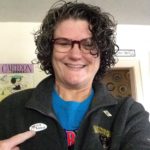 This Act Locally Waco blog post is by Ashley Bean Thornton, the Manager of the www.www.actlocallywaco.org website and the editor of the Friday Update newsletter: The WHOLE Enchilada. The Act Locally Waco blog publishes posts with a connection to these aspirations for Waco.
This Act Locally Waco blog post is by Ashley Bean Thornton, the Manager of the www.www.actlocallywaco.org website and the editor of the Friday Update newsletter: The WHOLE Enchilada. The Act Locally Waco blog publishes posts with a connection to these aspirations for Waco.
If you are interested in writing for the Act Locally Waco Blog, please email [email protected] for more information.
by Diego Loredo
You just graduated high school, you’ve been anticipating this moment all year, and now you’re finally here. You’re a college freshman! Although it can be fun and exciting, starting college can also be a huge challenge.
Starting college is a huge step in your career and in life. So don’t feel bad if you’re intimidated by it. Everyone goes through challenges during freshman year. Some may include making new friends, getting used to the classes, etc.
I’ve experienced many challenges my freshman year at UNT, so I know how it feels. My first semester was particularly tough. Mostly because of one class, statistics… That was, and still is, the toughest class I have ever taken. There were numerous homework assignments that took me hours to do, several exams that I studied all night for, and concepts that I just could not understand. Luckily, I made a few friends in that class who helped me get by. Statistics was also the first class ever where I got a D on an exam, which was the final exam (I still managed to pass with a C).
I didn’t really have any problems making any friends, literally the first week I moved into my dorm I made a small group of friends. Also, I was roommates with a good friend of mine that I have known since freshman year of high school. I introduced my roommate to my other friends and we all started hanging out all the time. We made a team for the outdoor soccer intramurals and met some other people who joined our team. After the tournament, which we made it to the playoffs but unfortunately lost 3-1, we had our own little group. They made it easier for me in my transition to college.
During my freshman year, I’ve encountered many different kinds of people, such as the guy who walks around campus with a flower pot on his head (I’m serious). I also enjoyed, and disliked, some of my classes and learned many things. Here are a few things that have helped me get through freshman year and will hopefully help you too as you continue to go through your transition into college and for others who will soon start their freshman year.
Find your own clique!
This is what I think is the most important thing to do your freshman year. You may have chosen to go to a college away from home to get a fresh new start, but it always helps to have a group of friends that you can depend on. Start by introducing yourself to people in your dorm or in your classes, or if you are living with a friend, the two of you can introduce yourselves to others. Having your own little clique will no doubt make college a lot easier, and more fun, for you.
Join an organization!
Your college is bound to have something that interests you. Whether it’s a debate club, photography club, or various sports clubs, find something you like! Joining some club or organization is always fun and it keeps you busy so that you won’t be stuck in your dorm all day (more on that later). Plus, joining an organization will help you meet people with similar interests as yours.
Attend events!
College campuses are always holding events to get their students involved. Your college should be no different. I’m sure there are countless events going on at your college every month. Go to a few of them! Get your roommate to go, or a few of your friends. Going to campus events are usually fun and you could win free stuff! Plus, it can get you interested in something you thought you never would.
Get to know your classmates!
This is extremely important. Introduce yourself to your classmates. I suggest you share notes or host study sessions. You never know when you will need your classmates’ help and vice versa. This will especially come in handy when exams start. Also, get to know your professor and attend study sessions held by TA’s.
Don’t stay in your dorm all day!
This was difficult for me. Every day after class I would head to my room and take a long nap. Sometimes I would just stay in bed all day. Luckily, my friends convinced me to get out more. If possible, don’t stay in your dorm all the time. Get out more! Hang out in your dorm lounge or game room, play sports outside, or go to various locations on campus with some friends. Although it’s fine to stay in your dorm every now and then, make sure that you go out too!
I’m not going to lie, freshman year was tough. It took me a while to get used to it but once I did, I became a lot more comfortable at UNT. My friends no doubt played a huge part in it. We made a lot of memories together, such as playing football in the snow and intramural sports. Along with having those friends, getting involved on campus helped as well. I believe these things that I did are what all freshman should do. Make new friends, get involved, study, and just have fun!
 Diego Loredo is a sophomore at the University of North Texas. He is majoring in public relations. He graduated from University High School in 2014. Although he is still not quite sure what exactly he wants to do, he thinks he wants to work somewhere in sports PR (preferably soccer or college football). His hobbies include playing soccer and golf. He is 19 years old.
Diego Loredo is a sophomore at the University of North Texas. He is majoring in public relations. He graduated from University High School in 2014. Although he is still not quite sure what exactly he wants to do, he thinks he wants to work somewhere in sports PR (preferably soccer or college football). His hobbies include playing soccer and golf. He is 19 years old.
The Act Locally Waco blog publishes posts with a connection to these Aspirations for Waco. If you are interested in writing for the Act Locally Waco Blog, please email [email protected] for more information.
by Josette Ayres
Recently a brightly colored t-shirt slogan caught my attention. In the center was a rhinestone “T” in the middle of a Superman like logo. Below it read, “Teaching is my SUPERPOWER”. My thought was a resounding, “AMEN”. Amen to those who’ve answered the calling to foster the education of our children. Those amongst us who not only provide a safe and engaging environment for young minds to explore their potential but who also inspire young minds to develop their optimal potential. To me that’s absolutely a “Superpower.” If you’ve ever had the good fortune to see a teacher in action, inspiring, encouraging and developing, you know it’s a special calling. I can rattle off to you a long list of these superheroes, starting with my mom who has devoted over 50 years to education and is still going strong. Educators are special individuals who invest time and energy into young people in the belief that the return on their investment will manifest into respectable, productive members of society.
While the mission of teachers has not changed, the demands on them are very different when you take into account today’s social climate where kids are coming to school with needs exceeding the educational realm. Hunger, mental health, poverty, homelessness, etc. have broad effects on a student’s ability to succeed in the classroom, yet our schools are required to “teach on” in spite of lacking resources to serve the pressing social needs of the child. Every model for student success shows the need for a continuum of contributors including students, the community and parental involvement. Despite this understanding, many of our educators are challenged with raising student achievement seemingly alone.
As a public school advocate with Parents for Public Schools of Waco (PPS Waco) I know all too well the impact empowered and informed parents can have in partnership with schools. Over the years our organization has helped foster relations between schools and home by encouraging parents to become educated on the issues, empowered to use their talents and interest to make a difference in the lives of all kids and to help mobilize parents to action. Through our shared belief in quality education for all children, teachers and school officials can rest assured they do not stand alone in their efforts to equip young minds to succeed.
With that, I encourage WISD parents, friends, and supporters to turn out in large numbers for the upcoming tax ratification election. Early voting begins, Monday October 19th and the election will be held on November 3. The tax ratification will provided a net increase of 5 cents in the District’s tax rate and will generate $8.2 million in revenue per year. The funds will be used to impact student achievement through programs that support:
Literacy
- Achieve 83% of third graders reading on grade level by 2020
- Hire highly qualified literacy aides for every Pre-K and Kindergarten classroom
- Additional reading teacher positions at middle school
- Expand Brazos Credit Recovery program to include older middle school students
College Credit Opportunities
- Maintain an 8 period day – allows students to take more classes and broadens the learning experience
- Allows all Junior and Seniors to take every dual credit course they want at MCC or TSTC at no cost to families
Behavior and Discipline
- Provide campus-based health services (health professional, social workers, behavioral specialists, etc.)
- Expand Saturday Diversion Classes for students and parents
A Link for more information on the tax ratification is provided below along with dates to the final to community information sessions.
It is my sincerest hope; Waco ISD parents and community members will turn out and vote “yes.” The passing of this tax ratification would significantly impact the opportunities for all students across WISD and set our District on course to transform lives through education in a way that’s never been achieved. Thank you WISD trustees and Superintendent Bonny Cain for your leadership in providing a comprehensive case for community support and for seeking the community voice and input throughout the process. Now we all have a vested interest in student success.
Links & information
Upcoming Town Hall Meetings
- Monday, November 19, 6:00 PM, JH Hines Elementary, 301 Garrison St
- Tuesday, November 20, 5:30 PM, Lake Waco Montessori School, 4601 Cobbs Dr
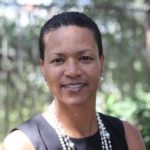 Josette Ayres is a small business owner of Ink & Stitches and currently serves as the Board President of Parents for Public Schools of Waco. Parents for Public Schools of Waco is a volunteer community board of parents and public school advocates who promote and strengthen public schools by engaging, educating and mobilizing parents.
Josette Ayres is a small business owner of Ink & Stitches and currently serves as the Board President of Parents for Public Schools of Waco. Parents for Public Schools of Waco is a volunteer community board of parents and public school advocates who promote and strengthen public schools by engaging, educating and mobilizing parents.
For more information on PPS Waco check out our Facebook page at Parents for Public Schools of Waco, or contact Josette by Phone/Text at 254-229-7172, or by email at [email protected] . Join Parents for Public Schools for an information session: Monday, October 26, 6:-7:30pm Waco Central Library- 1717 Austin Ave.
